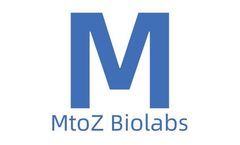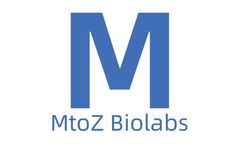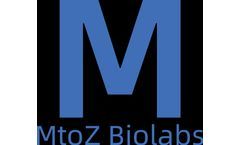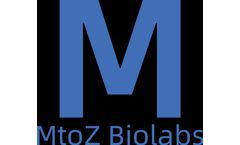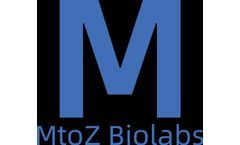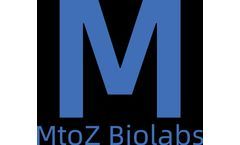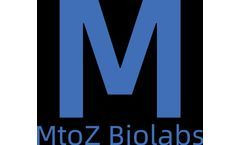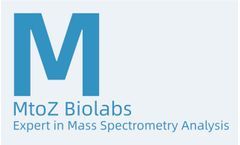Neurodegeneration Articles & Analysis: Older
63 articles found
What Is PROTAC Technology? Proteolytic targeting chimera (PROTAC) is a new type of drug design technology that works by inducing the degradation of target proteins. Unlike conventional small molecules that typically inhibit protein function, PROTACs facilitate the ubiquitination and subsequent degradation of specific proteins. This bifunctional molecule consists of two distinct elements: a ...
MicroRNAs (miRNAs) are small, non-coding RNA molecules that play a crucial role in the regulation of gene expression. Their ability to modulate various biological processes makes them significant players in the field of molecular biology and medicine. Among the various tools utilized in research and therapeutic applications, miRNA mimics have emerged as powerful instruments for manipulating and ...
Human umbilical cord cells, particularly those found in Wharton’s jelly, have emerged as a focal point in regenerative medicine and cellular therapy. Wharton’s jelly is a gelatinous substance that surrounds the umbilical cord’s blood vessels, providing structural support and protection. It is rich in mesenchymal stem cells (MSCs), which are known for their unique regenerative ...
Differentially expressed proteins refer to proteins that show significant changes in their expression levels in different biological samples or under different treatment conditions. Observing such differential expression is crucial for understanding cellular physiology and disease mechanisms. For example, some proteins may be upregulated or downregulated in health and disease states, or between ...
Protein phosphorylation is an important post-translational modification process that involves adding a phosphate group to an amino acid residue in a protein, usually a serine, threonine, or tyrosine residue. Protein phosphorylation plays a key role in regulating various biological processes within the cell, including signal transduction, cell cycle, and metabolism. Therefore, detecting protein ...
Acetylation detection of a specific protein is a method used to determine whether and where acetylation modifications have occurred on a protein. Acetylation is a common post-translational modification of proteins, typically occurring on lysine residues of proteins, and plays a crucial role in regulating protein function, cell signaling, gene expression, and disease onset. For instance, the ...
Oxidative phosphorylation is the process by which mitochondria produce ATP (adenosine triphosphate) in the cellular respiration chain. It is a crucial step in cellular energy metabolism. In this process, electrons are transferred from one carrier to another through a series of oxidation-reduction reactions and are ultimately passed to oxygen to form water. The energy released by this electron ...
In biomedical research, the detection and analysis of biomarkers are crucial. Among them, glycoproteins are an essential biomarker that plays a key role in many biological processes, including disease onset, progression, and treatment response. The Tandem Affinity Purification (TAP) of glycoprotein is an efficient detection method.What Is a Glycoprotein?Firstly, let's understand what a ...
Mitochondria are a unique type of organelle present within cells, serving as the primary source of energy within living organisms. They are responsible for several life-sustaining processes, including energy production, reducing free radicals, and maintaining cellular signaling. Proteins within the mitochondria play a key role in these processes.Why Sequence Mitochondrial Proteins?The sequencing ...
When it comes to the fascinating world of proteins, some names like collagen or hemoglobin might ring a bell. But what about tenascin-C, more commonly known as TNC protein? This often-overlooked molecule plays a vital, if subtle, role in how our cells talk to each other. Let's delve into the remarkable story of TNC protein and why it deserves more of the spotlight. What is TNC Protein? Before ...
Autophagy is an intracellular system that degrades cytosolic proteins and organelles. Autophagy can be divided into three groups: macroautophagy, microautophagy and chaperon-mediated autophagy (CMA). Macroautophagy is most extensively studied and best known among the three pathways. When macroautophagy is induced, an isolation membrane encloses a portion of cytoplasm, forming a characteristic ...
Tau protein is a microtubule-associated protein, mainly present in nerve cells, and participates in the stabilization of microtubules. In certain neurodegenerative diseases, such as Alzheimer's disease (AD), Tau protein may undergo abnormal phosphorylation and aggregation, forming so-called Tau tangles or neurofibrillary tangles.Ubiquitination is a kind of post-translational modification of ...
In post-translational modification (PTM) of proteins, ubiquitination is considered one of the most critical processes in regulating cellular functions and various diseases. The identification of ubiquitination sites becomes very crucial for understanding the mechanisms of ubiquitination-related biological processes. Experimental and computational methods can be used to identify ubiquitination ...
Ubiquitination detection of proteins is a biochemical technique used to identify and analyze ubiquitination modifications on proteins. Ubiquitination is a post-translational modification process that involves the covalent linkage of the small protein ubiquitin to lysine residues of a target protein, a modification that plays a crucial role in the regulation of protein degradation, signal ...
The ubiquitination site of a protein refers to those specific amino acid residues on the protein molecule that can covalently bind with Ubiquitin. Ubiquitin is a small protein that plays an important regulatory role in cells, particularly in protein degradation and signal transduction. Ubiquitination is a post-translational modification process where ubiquitin molecules are attached to specific ...
Persistent histone phosphorylation refers to the continuous or long-term phosphorylation of specific amino acid residues (usually serine or threonine) on histones under certain cellular conditions or stimuli. This phosphorylation is usually catalyzed by specific kinases (such as protein kinase A, protein kinase C, or MAP kinase) and can be reversed by phosphatases. Persistent histone ...
Histone SUMOylation is a post-translational modification that involves the covalent linking of the SUMO protein to the lysine residues of histones. This process requires the participation of a series of enzymes, including E1 activating enzyme, E2 conjugating enzyme and E3 ligase. SUMOylation plays a key role in gene expression regulation, DNA repair, RNA processing and nuclear transport in the ...
Post-translational modifications (PTMs) of histones are crucial for protein structure regulation, playing key roles in gene expression regulation, DNA repair, cell signaling, and more. These PTMs of histones can be achieved by adding or removing different chemical groups or proteins, thus affecting chromatin structure and function. Here are some common types of histone PTMs. 1. Acetylation The ...
Disturbances in metabolic pathways can lead to many common human diseases such as cancer, diabetes, obesity, hypoglycemia, hypolipidemia, phenylketonuria, neurodegeneration, etc. Glycolysis Glycolysis is the 10-step process by which glucose is broken down into pyruvate and ATP within the cell, using a series of enzymes to convert each six-carbon glucose molecule into two ...
If not released properly, MMP-9 can lead to a variety of brain disorders including epilepsy, schizophrenia, autism, brain injury, stroke, neurodegeneration, pain, and brain tumors. The most important mechanism of action of MMP-9 in brain disorders appears to be the involvement of immune/inflammatory responses. ...




